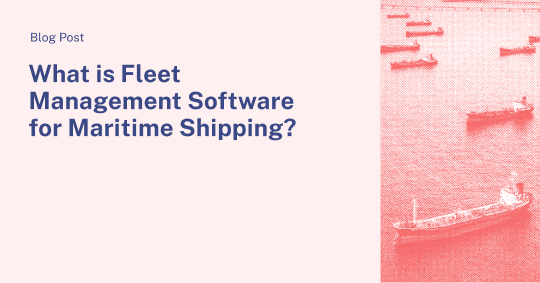In recent years, ESG (environmental, social, and governance) has springboarded into the commercial lexicon. As a compliance framework and, ultimately, an alternative method of valuing businesses, ESG metrics rank companies on more than their financial performance. By asking businesses to consider — and report on — how their operations could be affecting the environment, exacerbating social issues, or incubating non-financial mismanagement, ESG gives investors and shareholders new ways of determining where to place their capital. Depending on the viewpoint, ‘stakeholder capitalism’ acts as a catalyst for positive change and provides an antidote to “shareholder value at any cost”, or it condemns global trade and industry to a new form of bureaucracy. Either way, shipping must respond, and the challenges and opportunities that accompany ESG are becoming equally apparent.
ESG traces its origins to 2004, when a joint initiative of eighteen financial institutions was asked by the United Nations (UN) to, “consider how environmental, social, and corporate governance issues could be better integrated into asset management, securities brokerage services and associated research functions”. The result was a gradual integration of ESG metrics into global financial markets and analytical practices.
Today, many businesses have a requirement to report their ESG metrics to regulators, trade partners and financiers, and many others feel a rising pressure to do so. As of June 2023, 5,372 businesses across all sectors including maritime had signed up to the UN Principles for Responsible Investment (PRI). This program is a focal point for businesses to express their commitment to ESG and provides a useful bellwether for corporate participation.
In reality, producing ESG reports to the level of accuracy needed to make them useful is no simple task. Trying to improve on the results, even less so. Just gathering data of sufficient granularity to calculate a carbon footprint requires significant investment in sensing equipment, connectivity, and resources, especially in the shipping industry.
Many determining factors under social and governance are also qualitative, requiring a mix of expertise to interpret results and report them fairly.
So, how does ESG apply to the shipping industry? How can it be improved in the maritime context, and what does the future look like as a result? In this analysis, we take a pragmatic look at ESG with a focus on the environment, and ask; how can the maritime sector compete for ‘conscientious’ capital?
ESG principles in the maritime industry
Shipping should pay close attention to the undercurrent of ESG in finance. With a sizable environmental impact, vulnerable workforce, and increasingly regulated operating environment, pressure to change is rising.
ESG is already exerting an influence on competitive positioning. Take Poseidon Principle lenders for example. Shipowners must now do more than produce freshly inked charter party agreements to access capital. A growing number of financiers are looking for competent and beneficial trade partners with good ESG credentials to whom they are offering preferential rates.
Société Générale, whose shipping and cruise portfolio extends to EUR 10.3 bn, has introduced an ESG rating system for shipowners on their loan book. Speaking at a conference in January 2023, Paul Taylor, Global Head of Maritime Industries, described how expectations have changed toward maritime borrowers. He said, “We rate clients based on several pillars, including commitment to net zero, action to date, sustainability reporting, and their carbon footprint. This is risk management. It’s supporting those clients who are taking the energy transition seriously, and who are also managing technology risk themselves.”
ESG’s influence is also clear in Société Générale’s Shipping sector policy document which now prevents the lender from supporting “dedicated financial transactions, products and services” to owners of vessels involved in Arctic oil, oil sands and coal transport, or oil tankers with no double-hull, among other restricted characteristics.
But the influence of ESG is extending beyond ship finance too. As seafarer talent becomes harder to source and retain, many shipowners are using ESG metrics to differentiate themselves in the job market. One example from the social sphere is crew connectivity. According to research by Thetius, 92% of seafarers now state that access to the internet strongly influences where they choose to work, and 1 in 3 now place access to digital services as their top priority when looking for employment, above pay and leave.
But while there are examples of good citizenry in shipping, it is unrealistic to believe that the industry can act on charitable instincts alone. After all, the maritime sector is a trading enterprise which provides a vital service to the global economy but often returns comparatively low profit margins. In the decade preceding the COVID-19 pandemic (which precipitated uncharacteristically high profits in the liner trades), the average profit margin for containership operators was -0.2%. The cost of building, crewing, operating and maintaining ships can drastically limit, or even eviscerate profits for a given trading period, so spending and investment must remain linked to a tangible return.
Environmental performance
Shipping has a considerable challenge ahead to reduce its environmental impact. In terms of intensity, shipping remains one of the most efficient modes of transport for all types of cargo. But in absolute terms, shipping is responsible for around 3% of anthropogenic greenhouse gas emissions and that remains a significant contribution.
Ships are also a source of water pollution, noise pollution, and ecosystem damage as a result of propeller wash, groundings, and collisions. These factors, while already controlled by international conventions such as MARPOL, are projected to increase in line with global fleet growth unless they are accompanied by a range of reductive measures. Reporting requirements covering fuel consumption, carbon emissions, and other key environmental parameters are a relatively recent addition, even in the EU.
Measures of the International Maritime Organization (IMO), such as the CII and EEXI (we explain more about CII here), and market-based measures such as the EU ETS (read our guide to EU ETS), are seeking to drive environmental efficacy through compliance and cost-based incentives. However, some remain unconvinced of the effectiveness of ESG metrics at predicting good environmental outcomes. As Research Director at Scientific Beta stated in the British Financial Times in July; “ESG ratings have little to no relation to carbon intensity, even when considering only the environmental pillar of these ratings. The correlations are surprisingly low.”
Social performance
Shipping is an abstract industry to most people. Ships spend much of their time at sea, out of sight and often beyond the gaze of public opinion. But many issues exist and they do occasionally enter public discourse in a high-profile way. For example, the welfare of seafarers broke into the mainstream as press and media outlets around the world highlighted the plights of hundreds of thousands of seafarers stranded aboard ships at the height of the pandemic. Today, the charity Human Rights at Sea reminds us that at any given moment 30 million people are at sea, 45% of women working at sea have reported sexual harassment, and up to 100,000 fishing vessel crew members lose their lives at sea each year. These social issues are pressing, and organizations such as WISTA which seeks to attract more female talent into international maritime trade, and ISWAN which promotes and supports seafarer welfare, are working hard to make improvements.
Governance
This area relates to the methods, policies and processes used to guide the strategies and management of a company. The traditional role of business leaders is financial risk management, deemed effective when a company can attain sufficient market share and return value to its shareholders.
Transparency and accountability is a feature of good governance. What ESG strategies promote is expanding the governance remit beyond financial performance. It compels senior leaders to think about the distribution of rights and responsibilities throughout the organization and wider stakeholder groups and asks them to reflect on the impact of their decisions on all stakeholders, not just shareholders. A robust anti-corruption policy is one example. Deciding against a particular course of action that would cause harm to a local community or undermine a trade partner might be another.
How can shipping companies improve their ESG credentials?
Improvement on ESG metrics requires a defined strategy with clear targets. Shipping companies must understand what they want to achieve and by when. Only when this is understood can businesses develop action plans and initiatives for achieving targeted aims. Here are some key ideas that apply across the shipping industry:
Reduce greenhouse gas emissions and drive decarbonization
The environmental challenges facing the shipping industry are significant and pressing. To drive environmental change, shipping companies have to reduce emissions. This is an undeniably complex task, but while macro-scale transformations such as zero carbon fuels and radical new hull and propulsion designs are developed, all owners and operators should embrace solutions that exist today. These include:
- Investing in sensors and data collection to get a clearer picture of ship performance and efficiency. Collecting data and measuring parameters is the very foundation of improving the financial — and non-financial — performance of a business. Automating the collection of noon reporting data, fuel consumption, engine and propulsion parameters, route navigation accuracy and efficiency, domestic power consumption, and many other shipboard parameters cannot fail to deliver transformational insights through well-designed analysis.
- Using vessel data to monitor vessel performance and the impact of energy-saving devices or low-carbon fuels. Allied to the point above, artificial intelligence and machine learning excel at navigating through data anomalies and unstructured data of enormous complexity. For example, some research makes it clear that standard noon reporting data is insufficient for increasing fuel efficiency and that big data sets streamed from multiple sources are required to observe changes at sufficiently high granularity to make material improvements.
- AI-driven approaches to proactively identify efficiency savings and performance issues. Shipping finds itself in a period of iterative change. Ship operators who are most proactive with trialing novel methods of finding more efficiency will be the first to find what works and benefit from a competitive advantage as a result. Digital technologies such as digital twins can dramatically reduce the time, effort, and cost of this iterative process. In this way, digitalization can be seen as a significant hedging tool against the cost of change.
Leverage technology to unlock more efficient charter parties
Charter parties continue to rely on an antiquated framework that hampers collaboration between shipowners and charterers while obstructing operational efficiency. Vessel specifications remain tethered to static benchmarks, failing to account for performance changes over time. These unyielding standards pose a substantial obstacle to emissions reduction and the establishment of a sustainable, low-carbon supply chain. Furthermore, charter party agreements frequently prescribe a permissible speed range, yet the optimal speed often lies beyond these confines. Adhering strictly to charter party requirements, with some variability across segments, can compel charterers to execute voyages in an inefficient manner, ultimately resulting in excessive emissions.
Another example is the so-called “sail fast, then wait” paradigm in merchant shipping – a significant constriction on efficiency. Issues arise because charter parties represent competing interests. The shipowner is naturally concerned with maximizing the utilization and profitability of the ship, whereas the charterer is concerned with ensuring the cargo is prioritized, arriving at its intended destination at the earliest possible opportunity and in good condition. As a result, charter party agreements commonly contain clauses specifying “utmost dispatch”, meaning the ship should prioritize expediency over the reduction of environmental harms. Similarly, to indemnify the shipowner against port delays, the demurrage system compensates the owner for time spent as an “arrived ship” at anchor, further incentivizing the ship operator to sail fast, then wait.
Prioritizing ship efficiency, as required by the shipping industry’s net-zero ambitions, is potentially problematic for charter party agreements. Slow steaming may result in a cost-saving in fuel for the shipowner, not to mention the environmental benefits that arise, but under traditional charter party agreements, slow steaming could result in cargo delays and increased on-hire costs associated with an extended voyage time.
In addition, challenges are now being faced in the form of carbon crediting systems such as the European Union Emissions Trading Scheme. Under these schemes, shipowners will need to pay one carbon credit (called an ‘EU Allowance’ or ‘EUA’) from a dedicated carbon account for each tonne of in-scope carbon dioxide (CO2) emitted during EU voyages.
Digitalization opens up new possibilities to solve these charter party issues. Digital twins are perhaps the most powerful digital tool in this regard. As researchers from The Arctic University of Norway conclude from a study examining advanced data analytics for ship performance monitoring, “The Digital Twin has the capabilities to become an automated, self-aware anomaly detection, self-visualization platform that enables ship operators and fleet managers to monitor the instantaneous performance of the ship in real-time.” Simply put, digital twins can process highly complex information in real time to produce an accurate single source of truth on ship performance parameters for both shipowners and operators.
What is the future of ESG in the maritime shipping industry?
Once a niche concept, ESG is now firmly anchored in the maritime sector and looks set to reshape the future of maritime trade to some extent. What might this look like in practice?
Regulatory Changes:
Regulatory change has been a constant theme of the last few years and ESG will be a catalyst for further developments. At the 80th session of the Marine Environmental Protection Committee (MEPC), the IMO launched an updated GHG reduction strategy for 2024 – 2029, targeting a 20% – 30% reduction in GHG emissions by 2030, incorporating a 5% – 10% sourcing of energy from zero or near-zero GHG technologies such as green methanol, and ultimate arrival at net-zero across the entire industry “close to” 2050. It is reasonable to expect the general thrust of environmental regulation to consolidate and support these aims.
Green Financing and Investment:
A rising tide of green financing and investment is buoying the industry’s ESG efforts. The Poseidon Principles stand as a testament to this change. Finance organizations now evaluate investments based on ESG performance. Ships as capital-intensive assets will be governed by financial backing with these principles at their source as financial institutions allocate substantial sums to ESG-focused financing portfolios. As Deloitte recently reported, data from Clarkson’s shows that by the last quarter of 2021, ESG-based investments in shipping had expanded to approximately $281 billion, with a growing number of leading financial institutions embracing it.
Emissions Monitoring and Reporting:
Enhanced emission monitoring and reporting will become increasingly common practice. Groundbreaking technologies are now on board many vessels to ensure precise data collection and compliance. These technological advancements are vital in measuring and mitigating the industry’s environmental impact and are likely to remain a key feature in the compliance framework.
Supply Chain Transparency:
Shipping is less about ships and more about cargo. ESG principles are steering the focus toward ethical and sustainable sourcing of products. This shift involves tracking the origin of goods, ensuring they adhere to rigorous social and environmental standards, and, ultimately, promoting a cleaner and fairer supply chain. Combined with enhanced connectivity, maritime transport will no longer be a black hole in the supply chain.
Collaboration and Partnerships:
Collaboration will become the accelerant of change. Shipping companies, governments, NGOs, and technology providers are joining forces to develop and implement sustainable practices and solutions. These diverse stakeholders are aligning their efforts to chart a more eco-friendly course for the maritime industry.
Public Awareness and Consumer Pressure:
The tide of public awareness and consumer pressure is exerting more direct pressure on the maritime sector. Consumers will continue to expect sustainable products, and as awareness of ESG issues grows, the pressure on shipping companies to adopt ESG practices is mounting. It’s not just about profit margins anymore; it’s about protecting the planet’s most precious resource – our oceans.
Conclusion
ESG frameworks represent a transformative juncture in shipping. It urges the industry to recalibrate plans to accommodate sustainability and accountability which goes beyond a fleeting trend; it marks a wheel-over moment that will shape the future trajectory of maritime trade.
Regulatory changes have already set new directions. Stricter regulations are pushing for reduced environmental impact, propelling the industry to adopt greener practices and reporting requirements are introducing new factors into the competitive landscape.
The emerging dominance of green financing will reshape maritime too. ESG performance is being integrated into investment decisions and this is altering the landscape of capital allocation, irrespective of a moral sense of corporate responsibility.
Enhanced emissions monitoring and reporting are becoming standard practice. Advanced technologies are now onboard ships, providing real-time data and transparency, crucial in addressing environmental concerns and driving the industry’s progress toward cleaner operations.
Public awareness and consumer pressure are potent winds of change. Growing consumer demand for sustainable products exerts pressure on shipping companies to adopt responsible practices. The industry must consider the shifting currents of public sentiment and embrace transparency to navigate these waters effectively.
While ESG holds the potential for positive transformation and a more sustainable future, the extent of its impact remains uncertain. A realignment of business to serve the triple bottom line imperatives of profit, people, and the planet, has the potential to deliver a great deal of good, but the journey isn’t without stumbling blocks.
At Nautilus Labs, we help clients reduce their carbon footprint, improve transparency and accountability. We ourselves live by these principles and our mission is to combat climate change and help the ocean freight sector navigate effectively towards a net-zero future that’s good for business, good for communities, and good for the environment.


